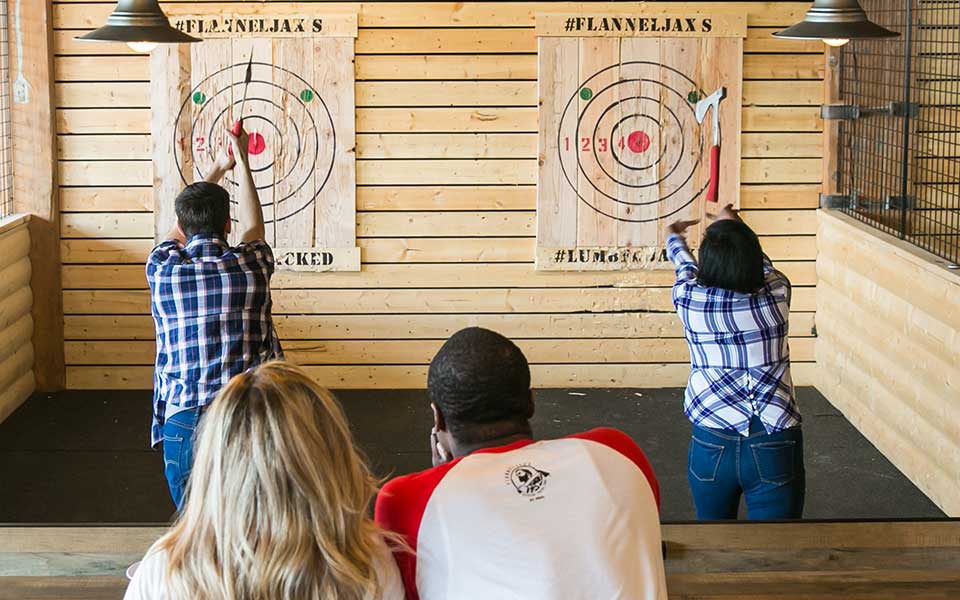The Fun of Axe Throwing: How This Sporting Activity Combines Skill and Adrenaline for a Fun Time
Axe throwing has emerged as a captivating sporting activity that masterfully intertwines the need for accurate ability with the thrill of adrenaline, offering participants a distinct and interesting experience. The act of hurling an axe towards a target demands focus and technique, simultaneously fostering an environment of camaraderie and friendly competition.
The Beginnings of Axe Throwing
Axe throwing, an entertainment activity that has actually gotten significant popularity in current years, traces its roots back to old times. The earliest documents of axe use in competitive contexts are located amongst the Celts and Vikings, that tossed axes for sporting activity as well as in combat training.
Medieval European warriors, especially during the Center Ages, exercised axe tossing as component of their martial training. The Francisca, a kind of throwing axe used by the Franks, came to be famous for its lethal precision. This conventional weapon was designed to be tossed at enemy guards and shield, showcasing its dual energy in both sport and battle.
In more recent history, axe tossing saw a resurgence in the logging camps of The United States and copyright in the 20th and 19th centuries. Lumberjacks would certainly take part in friendly competition, examining their precision and strength by aiming at wood targets. This evolution from a survival ability to an entertainment task has led the way for its modern resurgence, with specialized places and organizations currently commemorating the sport globally.
Tools You Required
Comprehending the abundant background of axe throwing boosts the admiration of the sport's contemporary model. For competitive and leisure axe tossing, the most generally utilized type is the hatchet, commonly evaluating between 1.25 to 2 pounds with a handle length of around 16 inches.
Equally essential is the target. Policy targets are constructed from wood, with softwood varieties like pine or cottonwood being favored for their capability to soak up and hold the axe. The target is typically separated into 5 concentric circles, each with a certain point value, to facilitate rating.
Security gear, however usually overlooked, is critical. Safety handwear covers can enhance grip and stop blisters, while closed-toed shoes are a must to shield feet from gone down axes (axe throwing denver co). Finally, a well-lit, roomy throwing location, complete with security obstacles, makes sure a regulated atmosphere where participants can focus on honing their abilities.
Standard Techniques Explained
Mastering the fundamental methods of axe throwing is important for both safety and security and efficiency. The initial method to understand is the grasp. Hold the axe with a company, yet loosened up hold, comparable to holding a golf club. The dominant hand ought to be placed directly below the axe head, while the non-dominant hand sustains the end of the take care of.
Your dominant foot should be a little forward, lining up with your target. This positioning help in maintaining stability and routing power precisely in the direction of the target.

Safety And Security First
Ensuring safety in axe throwing is paramount to creating an injury-free and enjoyable experience. Precaution start with the place layout. A properly designed axe throwing facility features clear demarcations in between throwing lanes, sturdy backdrops to catch roaming axes, and non-slip flooring to avoid accidents. Furthermore, adequate lighting is important to assist individuals keep visual precision and spatial recognition.
Advantages of Axe Throwing
Axe tossing offers a myriad of benefits that prolong past straightforward recreation. Literally, it provides a full-body exercise, involving muscular tissues in the arms, shoulders, back, and core. The repetitive movement of throwing the axe likewise improves hand-eye control and fine electric motor abilities. For those looking to improve their general health and fitness, axe throwing can act as a vibrant and interesting type of workout.
Psychologically, axe throwing needs accuracy, technique, and focus, making it an exceptional way to hone cognitive abilities. The concentration needed to hit the target can offer as a form of mindfulness, enabling participants to remove their minds and minimize stress and anxiety. This psychological involvement can be particularly useful in assisting individuals create better analytic skills and psychological durability.
Socially, axe throwing is often enjoyed in team settings, cultivating team-building and sociability. Whether as component of a business event or an informal outing with close friends, the sporting activity encourages interaction and collaboration. In addition, the common experience of finding out and enhancing with each other can enhance linked here relationships and produce enduring memories.
Conclusion

The earliest records of axe usage in affordable contexts are found among the Celts and Vikings, who tossed axes for sporting activity as well as in fight training. Release the axe when your hands are roughly at eye degree, allowing the axe's natural rotation to guide it in the direction of the target.
A properly designed axe tossing center functions clear separations between throwing lanes, durable backdrops to catch stray axes, and non-slip flooring to stop mishaps. Individuals need to be advised on the proper way to deal with and throw the axe, highlighting managed, intentional motions over forceful tosses.
In recap, axe throwing stands out as a sport that masterfully incorporates ability, precision, and adrenaline.